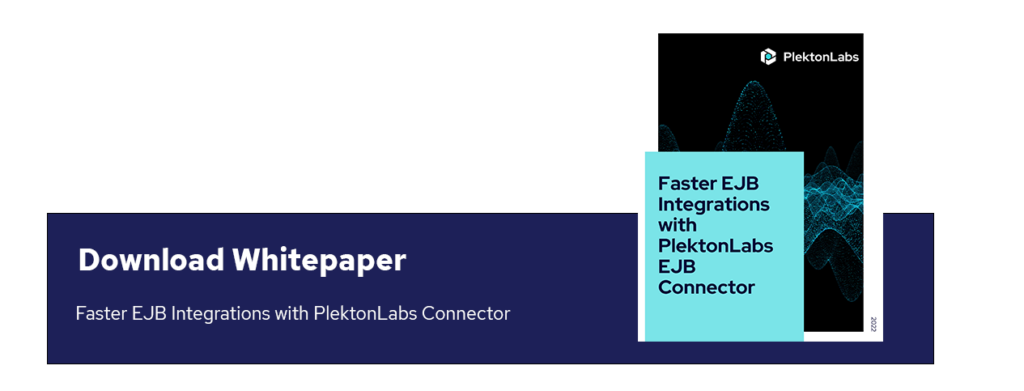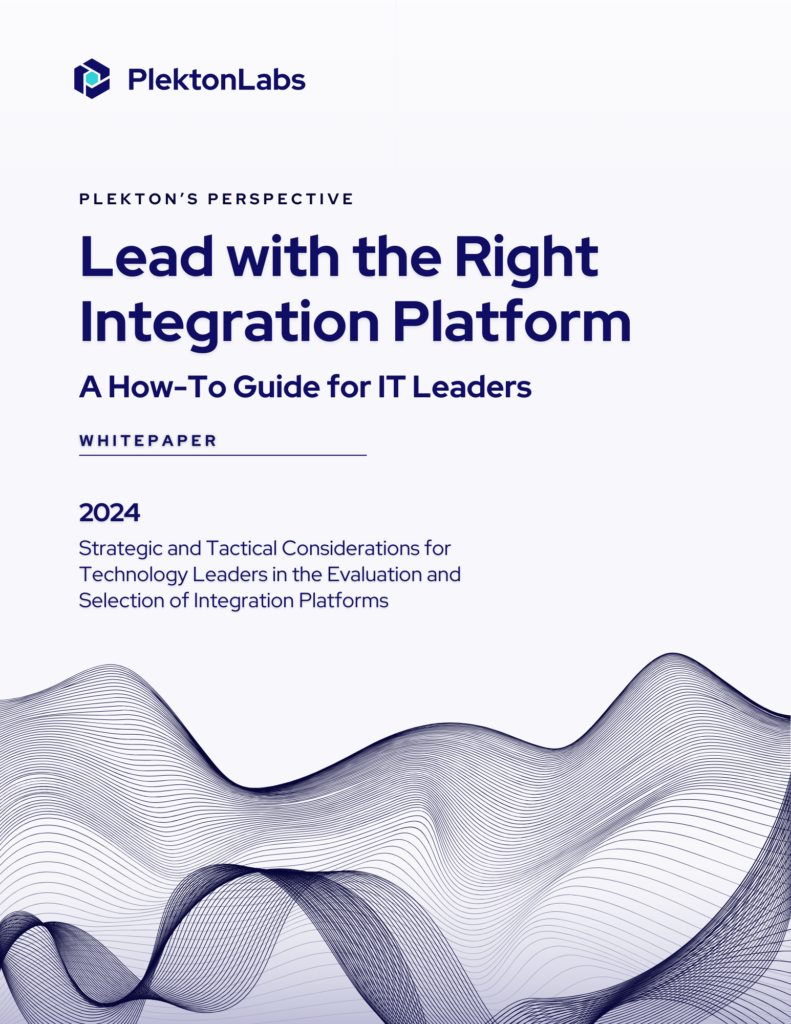In today’s digital age, integration is no longer just a back-end necessity—it’s a strategic enabler for business innovation and growth. But for many organizations, the biggest hurdle lies in visualizing the integration ecosystem. Without a clear understanding of how systems, data, and processes connect, businesses struggle to plan for scalability, agility, or long-term innovation.
Managing integration isn’t just about addressing complexity—it’s about creating a clear roadmap from where you are today (Day 1) to where you want to be (Day 2): a future-ready enterprise.
In this blog, we’ll explore why integration visualization matters and how it turns challenges into opportunities.
The Competitive Edge of Clear Integration
Imagine trying to solve a puzzle without the picture on the box. That’s the reality for organizations navigating integration without visualization. Having a clear view of your ecosystem isn’t just helpful—it’s transformative. Here’s how visualization provides a competitive edge:
- Informed Decision-Making
When you see the full entire integration landscape, every decision—from adopting new software to reallocating resources—becomes more strategic. - Customer-Centric Experiences
Seamless integrations mean faster responses, personalized services, and fewer disruptions for your customers. - Improved Agility
Moving from Day 1 to Day 2 requires a dynamic roadmap. With a clear understanding of dependencies and bottlenecks, businesses are able to quickly adapt to changes like scaling operations or onboarding new tools. - Enhanced Collaboration
Integration visualization bridges the gap between technical teams and business stakeholders by fostering alignment and shared understanding of goals and processes. - Optimized Performance
By identifying inefficiencies and monitoring key metrics, organizations can improve the speed and reliability of their integrations. - Future-Proofing Your Enterprise
With visibility into your systems, you can anticipate and adapt to changes in technology, market demands, and business objectives. - Reducing Risk
Blind spots in architecture lead to inefficiencies, vulnerabilities, and costly disruptions. Visualization helps address challenges proactively, minimizing risks before they escalate.
Visualization is a cornerstone of effective integration strategies, yet it often takes a back seat to pressing operational issues. Let’s unpack the common challenges organizations face and how to turn them into opportunities for growth and innovation.
The Challenge of Integration Visualization
- Fragmented Ecosystems
Most enterprises operate with a patchwork of legacy systems, cloud platforms, and third-party tools, each with its own protocols and formats. Bringing these disparate elements into a cohesive picture is a daunting task, leading to gaps in visibility and alignment.
- Limited Tools for Dynamic Visualization
Many integration platforms focus on functionality but fall short in offering robust visualization features. Businesses often rely on outdated tools like spreadsheets or static diagrams, which fail to provide the dynamic insights necessary for strategic decision-making.
- Reactive Problem-Solving
The pressure to address immediate issues—such as failed integrations or performance bottlenecks—often diverts attention from long-term strategy and visualization efforts. This reactive approach can leave organizations ill-equipped to anticipate and manage future challenges.
- Difficulty Quantifying Value
Without visualization, it becomes challenging to demonstrate the ROI of integration initiatives. This lack of tangible proof makes securing executive buy-in and funding for long-term projects an uphill battle.
From Challenges to Opportunities
To overcome these hurdles, organizations must prioritize visualization as a strategic enabler:
- Invest in Integrated Tools: Leverage platforms that combine functionality with dynamic visualization to offer a unified view of your ecosystem.
- Adopt a Proactive Approach: Shift focus from troubleshooting to strategy by identifying dependencies and potential bottlenecks early.
- Measure and Communicate ROI: Use visualization to demonstrate the value of integration efforts through clear metrics and outcomes.
Turning Integration Visualization into a Strategic Advantage
At PlektonLabs, we believe that solving integration challenges starts with clarity. Visualization isn’t just a tool—it’s the foundation for transformative growth and innovation. Here’s how you can make it happen:
- Centralize Your Integration Platform
A modern integration platform consolidates data and systems into one unified interface.
PlektonLabs Value: Our real-time dashboards provide a 360° view of your integration landscape, enabling proactive issue resolution and seamless management. With PlektonLabs, you can oversee your entire framework from a single, intuitive interface.
- Leverage Data-Driven Mapping Tools
Modern integration solutions must include visual mapping tools for easy understanding of complex systems.
PlektonLabs Value: Our advanced visual mapping tools simplify complexity. They make data flows, dependencies, and performance metrics instantly accessible, empowering both technical and business teams to collaborate effectively. With PlektonLabs, you’re not just managing integrations—you’re mastering them.
- Adopt an API-First Approach
APIs create reusable, scalable connections that simplify integration mapping and enhance visibility.
PlektonLabs Value: Our API-driven solutions are designed to meet dynamic business needs. At PlektonLabs, we ensure your integrations are reusable, future-proof, and easy to visualize, enabling swift adaptation to new demands.
- Automate Monitoring and Alerts
Automation enhances visibility by providing real-time monitoring and predictive insights.
Features to look for include:
- Alerts for failed integrations or delays.
- Dashboards showing throughput, latency, and other key metrics.
- Predictive analytics to model future scenarios.
PlektonLabs Value: Our solutions integrate intelligent alerting and predictive analytics to address issues before they disrupt operations. With PlektonLabs, you get real-time monitoring and actionable insights to optimize performance and prevent downtime.
- Build a Dynamic Blueprint
Static diagrams can’t keep up with modern dynamic environments. A living blueprint evolves with your ecosystem.
PlektonLabs Value: We provide tools to create adaptive blueprints that reflect your current state and model future scenarios. With PlektonLabs, you gain actionable insights to confidently navigate growth and innovation.
Final Thoughts: From Visualization to Transformation
The ability to visualize integration architecture is essential. In a world where businesses depend on interconnected systems to drive innovation and growth, having a clear picture of how everything fits together is the foundation for success.
Let PlektonLabs Be Your Guide
Integration doesn’t have to be a black box. At PlektonLabs, we specialize in turning complexity into clarity. From pre-built connectors to scalable integration strategies, we offer solutions that are as unique as your business needs. Together, we’ll navigate your integration challenges, enabling you to focus on what matters most: driving your business forward.
Use Case
Revolutionizing Retail with PlektonLabs Visualization Tools
Scenario: A global retail chain operates with separate systems for inventory management, sales tracking, and customer engagement, leading to data silos and inefficiencies.
Challenge: The company struggles to:
- Track inventory across stores in real-time.
- Identify urgent restocking needs.
- Analyze customer purchasing trends to optimize inventory allocation.
Solution with Visualization: With a centralized integration platform powered by PlektonLabs’ advanced visualization tools, the company achieves:
- Maps Inventory Data: A unified dashboard displays real-time stock levels across all locations.
- Tracks Sales Trends: Visualized data highlights fast-selling products by region.
- Automates Alerts: Predictive analytics flag low-stock items and recommend inventory transfers or supplier orders.
Results:
- Enhanced Efficiency: Real-time insights prevent overstock and out-of-stock scenarios, ensuring optimal inventory levels.
- Informed Decision-Making: Visual trends empower managers to make strategic, data-driven decisions.
- Increased Revenue: Streamlined inventory allocation boosts sales and reduces waste.
At PlektonLabs, we help businesses transform complexity into clarity. Our visualization tools deliver actionable insights, driving efficiency, growth and measurable results.





